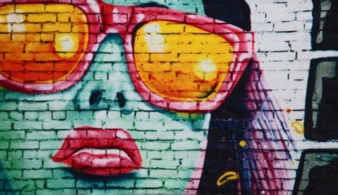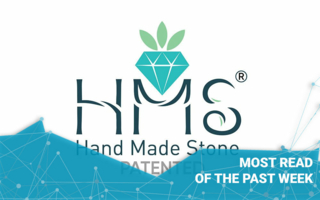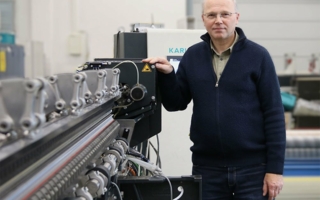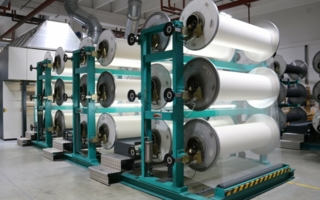26/04/2021 – Bathing fun – yay! — auf Deutsch lesen
Karl Mayer: Warp knitted terry fabric with digital prints
The terry cloth product creates vibrant accents with lively motifs in bright colours at the swimming pool, at the beach or in the bathroom.
The textile was produced on a TM 4-TS EL with double-sided fabric to ensure that the finished product is not only a must-have bathing accessory, but also a real eye-catcher. One side features a dense layer of cotton loops. It quickly absorbs moisture from the skin after bathing and nestles gently against the body. The other side consists of sheared polyester. Its soft texture invites you to relax, while its smooth finish makes it both easier to print on and quicker to dry. The imaginative design was created at Zimmer Austria, specialist for printing, coating and finishing systems, using a digital printing process.
Melanie Bergmann, textile developer at Karl Mayer:
“The colours are extremely vibrant and vivid while the contours are sharp. Even the finest lines are clearly defined.”
Warp knitting technology with a firmly integrated terry loop ensures that the colourful towels can be enjoyed for a long time to come.
The fluffy fibre layer is extremely resistant to thread pullers.
The long service life and ecological advantages in production distinguish warp knitted terry articles from their weaving counterparts.
The TM 4-TS EL does not require compressed air like conventional airjet rapier looms and therefore consumes around 87 per cent less energy per kilogram of fabric produced. The sizing process is also eliminated in warp knitting. This saves textile chemicals, waste water and energy to the tune of approx. 0.20 USD/kg. This corresponds to about 30 per cent of the manufacturing costs – excluding yarn – for the production of the raw material. Apart from saving costs, the terry warp knitting machine is extremely efficient. With a width of 186” and a speed of 800 rpm, the TM 4-TS EL produces around 1,800 kg of terry cloth weighing 400 g/m2 every day in 24-hour operation. This is around 250 per cent more than on an airjet rapier loom.




